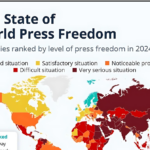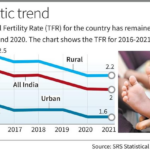Tamil Nadu, Delhi, Kerala Birth Rates Declining at twice the Rate of National Average: Sample Registration System Data
Recently, the Registrar General of India released the Sample Registration System (SRS) Statistical Report 2021. The latest Sample Registration System (SRS) Statistical Report 2021, released by the Registrar-General of India, shows that the all-India crude birth rate declined to 19.3 in 2021, falling at an average rate of 1.12% annually from 2016.
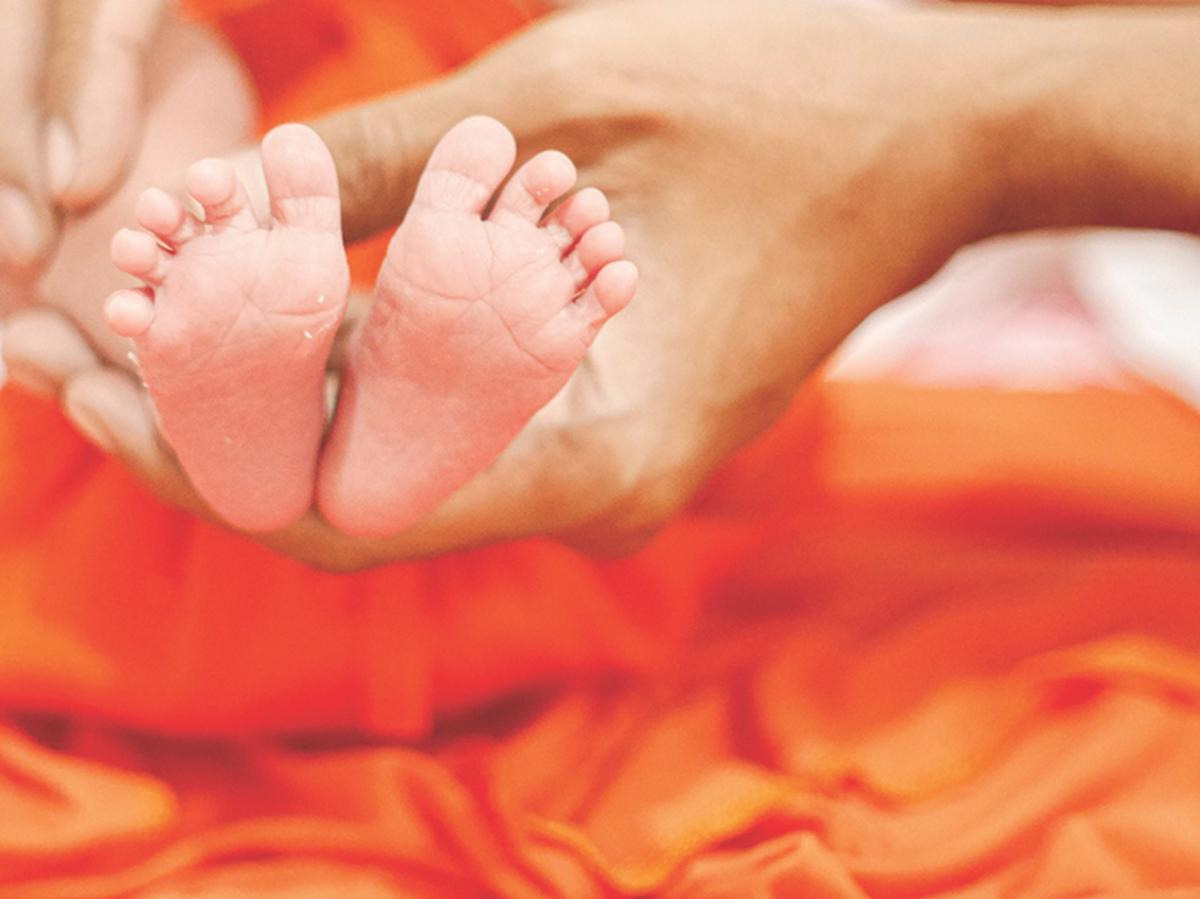
- In comparison, Tamil Nadu, Delhi, and Kerala witnessed much steeper declines, at annual rates of 2.35%, 2.23%, and 2.05% respectively, nearly twice the national average. Meanwhile, states like Bihar, Uttar Pradesh, Madhya Pradesh, and Rajasthan continue to record higher birth rates, with only Uttarakhand showing an increase in crude birth rate during the same period.
Birth Rates in Decline
- As per the report, the all-India crude birth rate (CBR) in 2021 stood at 19.3 births per 1,000 population, declining at an annual rate of 1.12% from 2016 to 2021. However, Tamil Nadu, Delhi, and Kerala saw a decline at almost double this rate:
- Tamil Nadu: 2.35% annual decline
- Delhi: 2.23% annual decline
- Kerala: 2.05% annual decline
- This accelerated drop is also visible across 13 large states and union territories, most of which include India’s more urbanised and southern regions.
Regional Comparison of Birth Rate Trends
- Southern states such as Andhra Pradesh (1.26%), Telangana (1.67%), and Karnataka (1.68%) also showed a faster decline compared to the national average. In contrast, northern and eastern states showed much slower rates of decline:
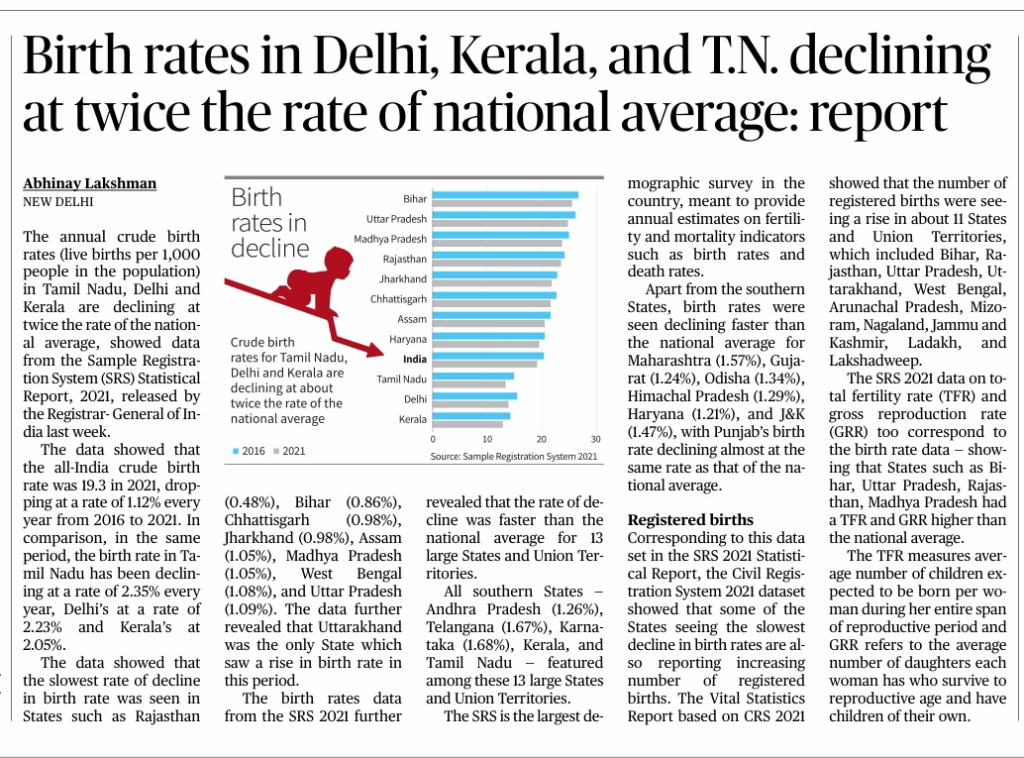
- Rajasthan: 0.48%
- Bihar: 0.86%
- Chhattisgarh & Jharkhand: 0.98%
- Assam & Madhya Pradesh: 1.05%
- Uttar Pradesh: 1.09%
Notably, Uttarakhand was the only state to record a rise in birth rates during the same period.
Civil Registration System (CRS) 2021
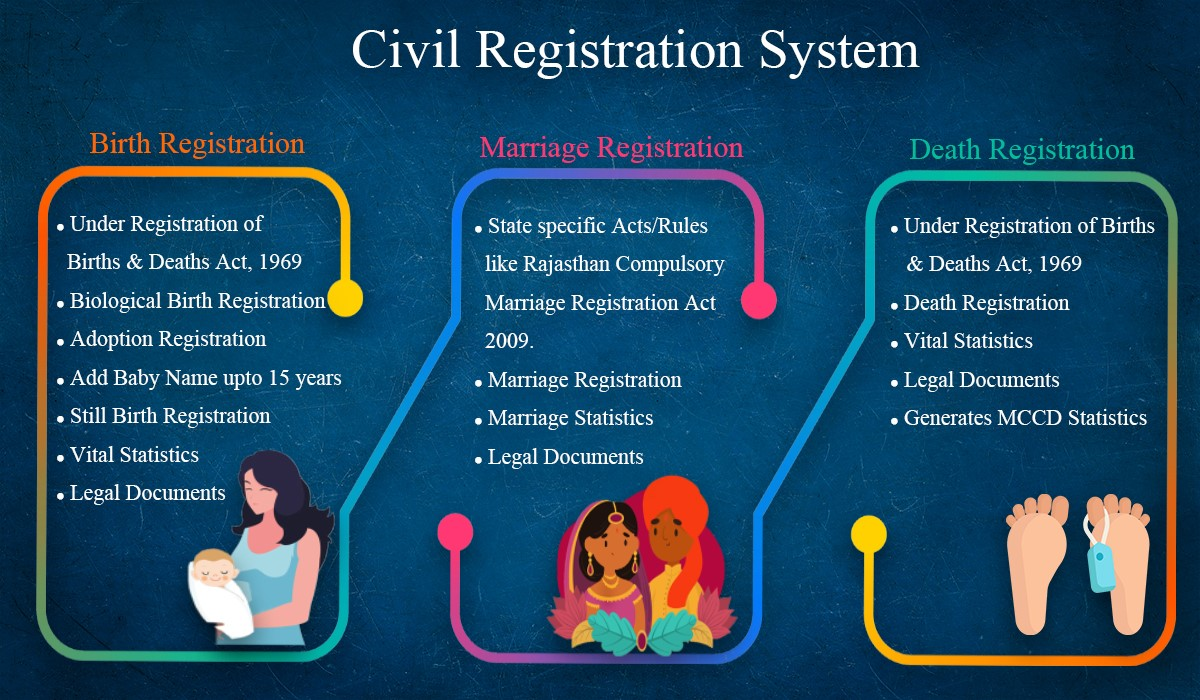
- The Civil Registration System (CRS) 2021 data complements the SRS findings.
- While southern states like Tamil Nadu, Kerala, Andhra Pradesh, and Karnataka reported a consistent decline in registered births since 2012, many northern and north-eastern states have seen a rise in registered births, such as:
- Bihar, Rajasthan, Uttar Pradesh, West Bengal
- Uttarakhand, Jammu & Kashmir, Ladakh
- Lakshadweep, Arunachal Pradesh, Mizoram, and Nagaland
This discrepancy indicates that while population growth is stabilising in parts of southern and western India, it remains robust in several northern and north-eastern states.
Fertility and Reproduction Metrics
- The report also assessed Total Fertility Rate (TFR) and Gross Reproduction Rate (GRR), key indicators for long-term population growth:
- India’s TFR in 2021: 2.0
- India’s GRR: 1.0
Higher-than-average TFR and GRR were reported in:
- Bihar: TFR 3.0, GRR 1.4
- Uttar Pradesh: TFR 2.7, GRR 1.3
- Rajasthan: TFR 2.4, GRR 1.2
- Madhya Pradesh: TFR 2.6, GRR 1.2
- In contrast, West Bengal stood out with one of the lowest TFR (1.4) and GRR (0.7), despite an increase in registered births and a relatively slow decline in birth rate.
Concerns
- Uneven Decline in Birth Rates Across States: Some states (e.g., Bihar, UP, MP, Rajasthan) show slow or minimal decline in birth rates, contributing to regional population imbalances.
- These high-birth-rate states may continue to drive overall population growth, putting pressure on resources, infrastructure, and services.
- Demographic Divergence Between Regions: Southern and western States are moving toward or below replacement-level fertility, while northern and eastern States remain above it.
- Aging Population Risk in Low Fertility States: States with low TFR (e.g., Kerala, West Bengal) risk aging population challenges shrinking labor force, increased burden on healthcare and pensions, and need for revised economic and social policies.
Way Forward
- Enhance Family Planning Services: Expand access to contraception and reproductive health, especially in high-fertility states.
- Promote Female Education: Focus on girl child education and awareness to delay marriage and childbirth.
- Improve Data Quality: Align and strengthen SRS and CRS systems; expedite the delayed Census for accurate planning.
- Address Regional Imbalances: Promote development in high-growth regions through jobs, education, and infrastructure.
Conclusion
- The Sample Registration System 2021 data reveals a growing demographic divide across India. While southern and more urbanised states like Tamil Nadu, Kerala, and Delhi are witnessing rapid declines in birth rates, raising concerns over ageing populations and shrinking labour forces, northern states such as Bihar and Uttar Pradesh continue to show high fertility rates, straining resources and amplifying developmental challenges.
PRELIMS PRACTICE QUESTION
Question :According to the SRS Statistical Report 2021, which of the following statements is/are correct regarding birth rate trends in India?
- Tamil Nadu, Delhi, and Kerala experienced birth rate declines at more than double the national average from 2016 to 2021.
- Uttarakhand was the only state to record an increase in the crude birth rate during the same period.
- Bihar and Uttar Pradesh now have Total Fertility Rates (TFR) below the replacement level of 2.1.
- West Bengal, despite a low TFR, recorded an increase in registered births.
Select the correct answer using the code below:
A) 1 and 2 only
B) 2 and 4 only
C) 1, 2, and 4 only
D) 1, 2, 3, and 4
Correct Answer: (C) 1, 2, and 4 only
Statement 3 is incorrect: Bihar and Uttar Pradesh have TFRs well above the replacement level.)
MAINS PRACTICE QUESTION
Question: How does the uneven rate of decline in birth rates across Indian states reflect broader demographic, regional, and policy challenges, as seen in the Sample Registration System (SRS) 2021 data? (250 words, 15 Marks)






